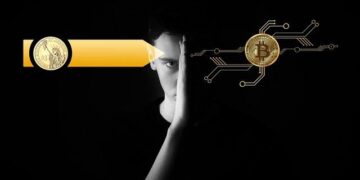SERIES
From the smallest scales to the largest, the physical world provided no shortage of surprises this year.
Introduction
By one metric, this year’s biggest physics news happened 80 years ago. Yet while the success of a movie about the making of the atomic bomb was a surprise, the discoveries coming out of actual physics laboratories — including the grandest laboratory of them all, the universe itself — were no less impressive than the surge in interest about J. Robert Oppenheimer.
The James Webb Space Telescope, now in year two of science operations, continues to return stunning images of the cosmos, and the trickle of science results from 2022 has now swelled into a torrent. From its perch a million miles away, JWST studies everything from the universe’s most distant galaxies to the planets and moons right next door. The only constant has been surprise: The telescope’s observations continually challenge well-established theories and force scientists to reimagine how familiar cosmic objects came to be — things like stars and planets and black holes.
Black holes are also at the center of one of 2023’s most notable discoveries: evidence for gravitational waves produced by colliding supermassive black holes. To detect those ripples in space-time, several consortia of astronomers scrutinized the cosmos for 15 years — long enough to detect the tiny temporal fluctuations that occur as gravitational waves wash over the Earth.
Closer to home, scientists are busy both manipulating and understanding the quantum world — a realm that often doesn’t play by normal rules. This year saw some remarkable advances in quantum computing’s most basic hardware, the qubits that in their final form could power enormously complex calculations. And, crucially, researchers also made improvements in quantum error correction, which remains one of the trickiest problems to solve.
But these advances don’t mean we’re done understanding the universe from the largest of its scales to the tiniest. Our next orbit around the sun could be full of even more profound revelations.

Introduction
The Cosmos, Unveiled
It has often been said that each time we look at the universe in a new light — or through a new lens — we see things we never imagined. NASA’s James Webb Space Telescope has delivered on that promise. At the turn of the year, astronomers announced that the telescope’s golden, honeycombed eye had stolen glances of the universe’s first stars. JWST has also seen the light from galaxies that glowed some 300 million years after the great big clap that created the universe as we know it. In JWST images, those galaxies are “just so stupidly bright,” said Rohan Naidu of the Massachusetts Institute of Technology. Now, astronomers are struggling to explain how those galaxies grew so big so fast, as their size and precociousness defy expectations.
The same is true for the supermassive black holes that anchor galaxies to the cosmic tapestry. Scientists expected to see a few bulky black holes in the early universe, but JWST is spotting them by the bucketful. And they’re showing up earlier, and with more heft, than expected. Astronomers hope such observations will reveal how those gargantuan black holes formed. “I’ve been waiting for these things for so long,” said Marta Volonteri, an astrophysicist at the Paris Institute of Astrophysics.
Closer to home, in our galaxy’s Orion nebula, JWST recently spotted 42 intriguing pairs of objects that orbit one another. These worlds might be stars, or they might be free-floating planets. It’s hard to tell. But either way, these enigmatic worlds don’t fit neatly into existing theories describing how either stars or free-floating planets form. As with all new ways of seeing, JWST is inspiring far more questions than it answers.
Introduction
Stronger Quantum Knots
Earlier this year, quantum researchers announced that they’d taken a step toward developing a more reliable quantum computer. In this system, information is stored topologically; it is woven into almost mythical particles that share memories and remember their pasts. Braiding two of these “non-abelian anyons” together stores information in the twists — thus, you can measure one or the other without losing that information. As my colleague Charlie Wood explained, “By maintaining nearly indestructible records of their journeys through space and time, non-abelian anyons could offer the most promising platform for building error-tolerant quantum computers.”
Then in August, scientists tackling the trickiness of quantum error correction announced that they had developed a powerful new class of codes that could — at least in theory — help with the persnickety problem of flimsy, error-prone quantum bits.

Kristina Armitage/Quanta Magazine
Introduction
Quantum Magic
In a feat reminiscent of a magic trick, scientists reported earlier this year that they had pulled energy out of a vacuum. Or had they? Rather than conjuring something from nothing, physicists managed to teleport energy over microscopic distances. The leap worked because the team exploited the strange properties of the quantum vacuum — a peculiar type of nothing that is actually imbued with a sort of sizzling quantum energy.
Earlier this year, scientists discovered a new type of phase transition, akin to the transformation of a solid into a liquid. Except this was a transition in the structure of information. When quantum bits (or qubits) are entangled, measuring one reveals the states of any others. Entanglement can spread, but measurement destroys the web of entanglement — it’s like snipping the wires in a chain-link fence. What happens when entanglement and measurement duke it out in a grid of entangled qubits? The transition between a state in which entanglement survives and one in which it succumbs to the wire cutters of measurement is what physicists identified and observed in the lab. “It’s where the properties in information — how information is shared between things — undergo a very abrupt change,” said Brian Skinner of Ohio State University.
When it comes to these systems, we throw around the term “quantum” almost as if quantum and not-quantum exist in a binary. That isn’t necessarily true. In the effort to quantify quantumness — or the degree to which a quantum system cannot be simulated on a classical computer — researchers recently unveiled a new metric, bringing the total known metrics to three. First there was entanglement. Then there was “magic.” Now, there’s “fermionic magic.”

Olena Shmahalo for Quanta Magazine
Introduction
Toward Quantum Gravity
It’s an old problem in physics: Quantum mechanics describes the world one way, Einstein’s theory of gravity another, and when the two come together you get nonsense. Some scientists, like Renate Loll, believe that gravity must be quantized; others, like Jonathan Oppenheim, would bet against that idea. While Loll has pioneered a computationally driven approach to quantum gravity that involves deriving the shape of space-time from first principles, Oppenheim is searching for an even deeper fundamental “something” that might connect the two.
And yet quantum gravity keeps showing up in the solutions to seemingly intractable paradoxes.
A group of leading theorists believe they’ve pinpointed the mistake that led to Hawking’s famous black hole information paradox, in which indestructible information inside a black hole is seemingly lost as the black hole evaporates. Hawking’s apparent mistake was that he (and the generations of physicists that followed) didn’t realize that the normally reliable “semiclassical” treatment of gravity can’t handle the complexity of states a black hole can produce, unexpectedly breaking down at the black hole’s outer surface. The group has now developed a more sophisticated theory of gravity that can handle the region just inside the event horizon and doesn’t violate any current experimental data.

Jim Hoover
Introduction
A Hum of Gravitational Waves
When galaxies collide, their supermassive central black holes merge — a smashup so violent that it shakes the very fabric of space-time itself. In June, multiple international collaborations announced that they had found the resulting gravitational waves. To do this, the teams used pulsars, rapidly spinning stellar corpses that serve as perfect cosmic clocks. The gravitational waves alter the apparent rhythm of the pulsars, but it took 15 years of study to identify this signature of violent events that continually rock the cosmos.
Editor’s note: Michael Moyer contributed to this article.
Next article
The Year in Computer Science
>>> Read full article>>>
Copyright for syndicated content belongs to the linked Source : Quanta Magazine – https://www.quantamagazine.org/the-biggest-discoveries-in-physics-in-2023-20231221/































